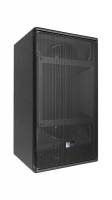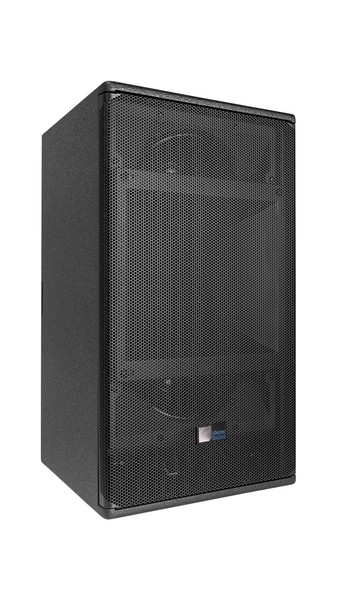SonUX40 MEYER SOUND Enceinte amplifiée ULTRA-X40 2 voies 2x8"+3" 110°x50°


Quantité
ex
Liste des Projets disponibles
Description
Caractéristiques
Partager
Fiche Produit
Les modèles ULTRA-X40 et ULTRA-X42 de Meyer Sound perpétuent la tradition des enceintes UPA qui connaissent un grand succès.
des haut-parleurs UPA qui ont connu un grand succès, si polyvalents
ils ont été un standard universel dans presque toutes les applications depuis plus de 35 ans.
Des spectacles de tournée aux parcs à thème, des lieux de culte aux spectacles de théâtre,
et des salles de conférence aux concerts à grande échelle,
La technologie Meyer Sound offre une fidélité exceptionnelle avec une puissance élevée, une faible distorsion et un comportement uniformément prévisible.
des haut-parleurs UPA qui ont connu un grand succès, si polyvalents
ils ont été un standard universel dans presque toutes les applications depuis plus de 35 ans.
Des spectacles de tournée aux parcs à thème, des lieux de culte aux spectacles de théâtre,
et des salles de conférence aux concerts à grande échelle,
La technologie Meyer Sound offre une fidélité exceptionnelle avec une puissance élevée, une faible distorsion et un comportement uniformément prévisible.
Gamme de fréquences 55 Hz - 19,5 kHz
Réponse en fréquence 56 Hz - 19 kHz ± 4 dB
Réponse en phase90 Hz - 19,5 kHz ± 45
NPA de crête linéaire4132,5 dB avec facteur de crête de 18 dB (bruit M),130 dB (bruit rose), 131 dB (bruit B)134 dB avec facteur de crête de 18,5 dB (bruit M),132 dB (bruit rose), 134 dB (bruit B)
Pavillon orientable : 110° x 50
Basse fréquenceDeux haut-parleurs à cône de 8 pouces ; impédance nominale de 4 Ω.
Haute fréquenceUn haut-parleur à compression à membrane de 3 pouces connecté à un pavillon rotatif ; impédance nominale de 8 Ω.
TypeDifférentiel, équilibré électroniquement
Plage de mode commun maximale±15 V CC, clampé à la terre pour la protection contre les transitoires de tension.
ConnecteursEntrée XLR 3 broches femelle avec sortie en boucle mâle ; connecteur XLR 5 broches en option pour accueillir les signaux audio symétriques et RMS.
Impédance d'entrée10 kΩ différentielle entre les broches 2 et 3.
Câblage5Pin 1 : châssis/terre à travers un réseau de fixation de 1 kΩ, 1000 pF, 15 V pour fournir une levée de terre virtuelle aux fréquences audio.
Broche 2 : Signal + Broche 3 : Signal - Broche 4 : RMS (insensible à la polarité)Broche 5 : RMS (insensible à la polarité)
Boîtier : Terre et châssis
Sensibilité d'entrée nominale0 dBV (1,0 V rms) continu est généralement le début de la limitation pour le bruit et la musique.
Niveau d'entréeLa source audio doit être capable de produire de +20 dBV (10 V rms) dans 600 Ω pour produire le pic SPL maximum sur la bande passante de fonctionnement du haut-parleur.
Réponse en fréquence 56 Hz - 19 kHz ± 4 dB
Réponse en phase90 Hz - 19,5 kHz ± 45
NPA de crête linéaire4132,5 dB avec facteur de crête de 18 dB (bruit M),130 dB (bruit rose), 131 dB (bruit B)134 dB avec facteur de crête de 18,5 dB (bruit M),132 dB (bruit rose), 134 dB (bruit B)
Pavillon orientable : 110° x 50
Basse fréquenceDeux haut-parleurs à cône de 8 pouces ; impédance nominale de 4 Ω.
Haute fréquenceUn haut-parleur à compression à membrane de 3 pouces connecté à un pavillon rotatif ; impédance nominale de 8 Ω.
TypeDifférentiel, équilibré électroniquement
Plage de mode commun maximale±15 V CC, clampé à la terre pour la protection contre les transitoires de tension.
ConnecteursEntrée XLR 3 broches femelle avec sortie en boucle mâle ; connecteur XLR 5 broches en option pour accueillir les signaux audio symétriques et RMS.
Impédance d'entrée10 kΩ différentielle entre les broches 2 et 3.
Câblage5Pin 1 : châssis/terre à travers un réseau de fixation de 1 kΩ, 1000 pF, 15 V pour fournir une levée de terre virtuelle aux fréquences audio.
Broche 2 : Signal + Broche 3 : Signal - Broche 4 : RMS (insensible à la polarité)Broche 5 : RMS (insensible à la polarité)
Boîtier : Terre et châssis
Sensibilité d'entrée nominale0 dBV (1,0 V rms) continu est généralement le début de la limitation pour le bruit et la musique.
Niveau d'entréeLa source audio doit être capable de produire de +20 dBV (10 V rms) dans 600 Ω pour produire le pic SPL maximum sur la bande passante de fonctionnement du haut-parleur.